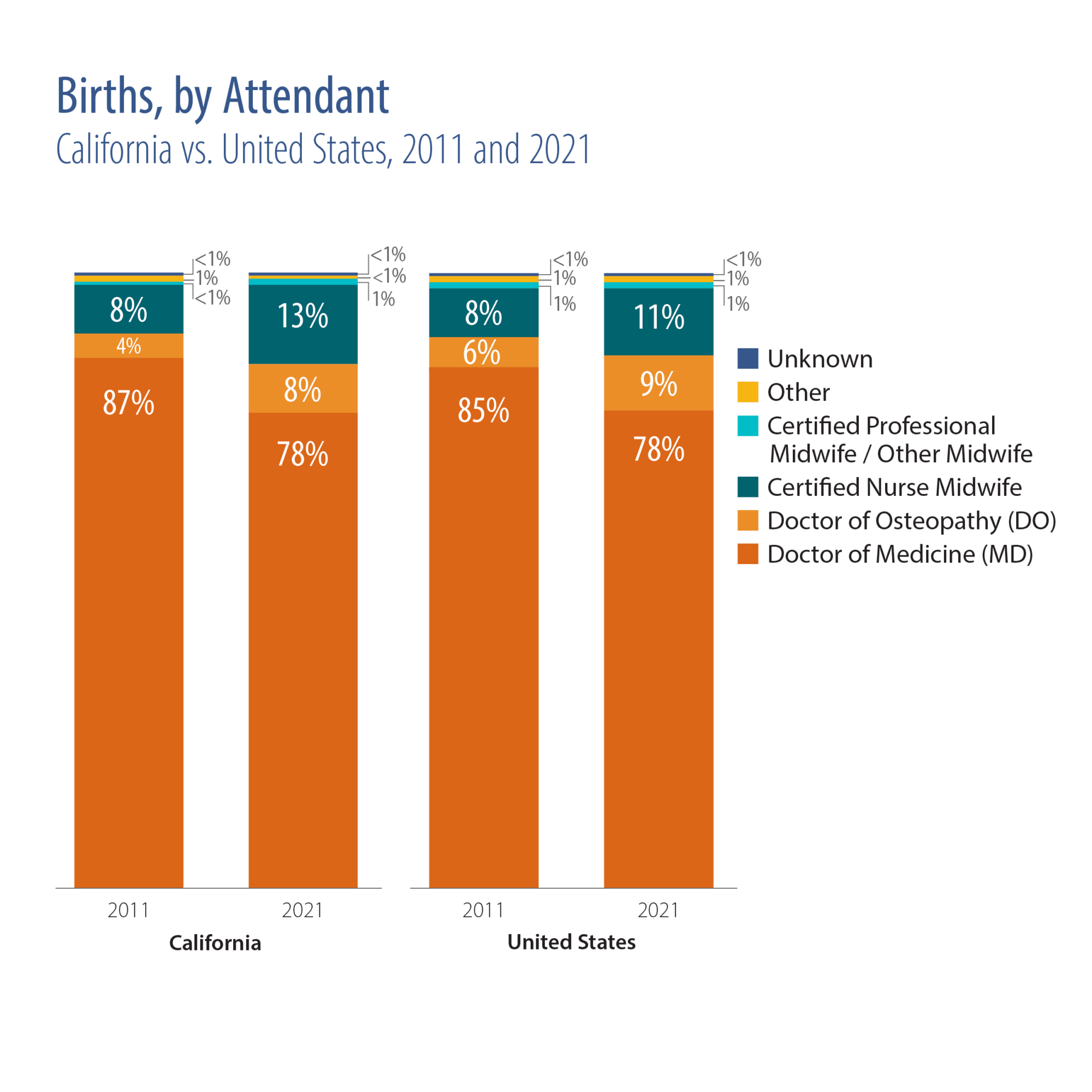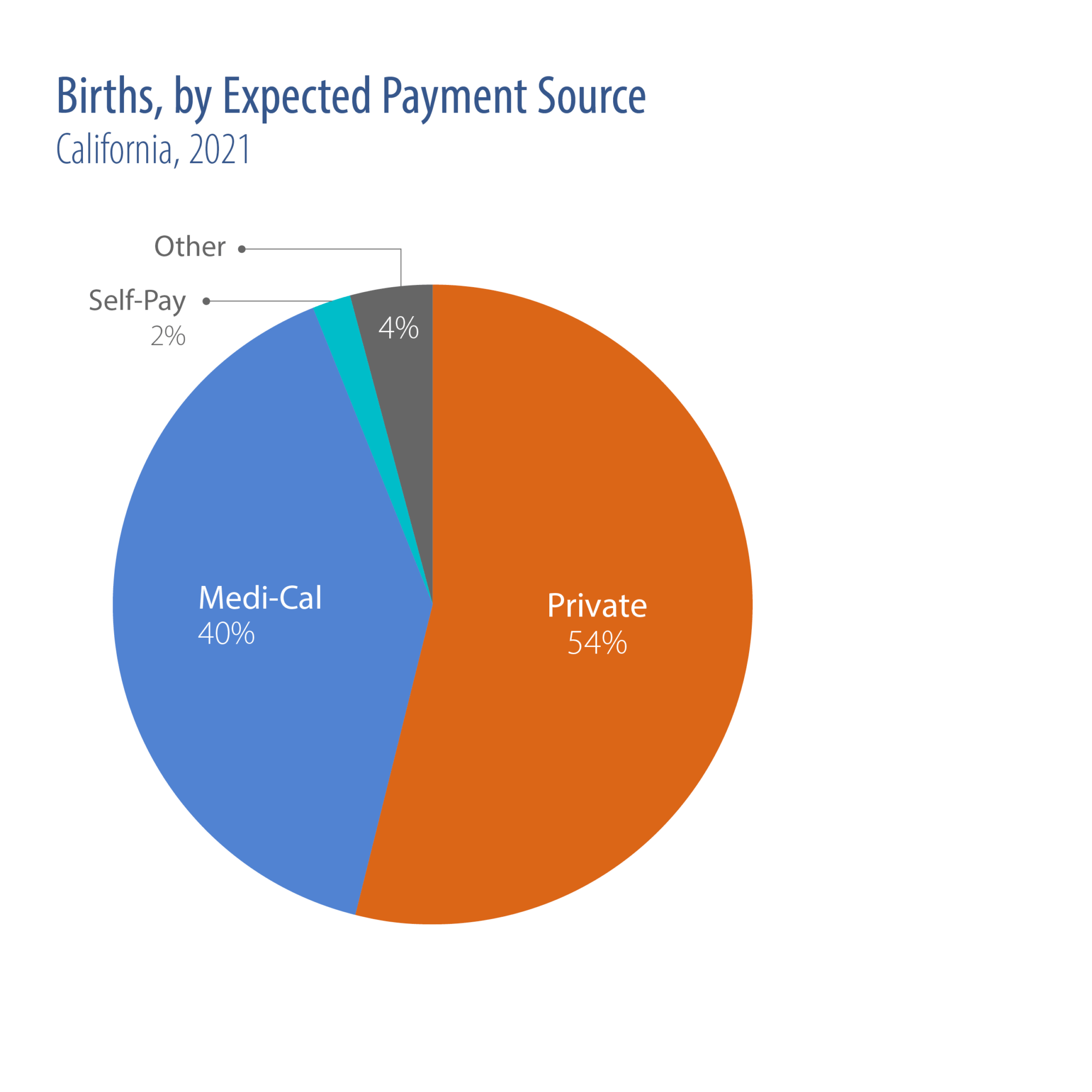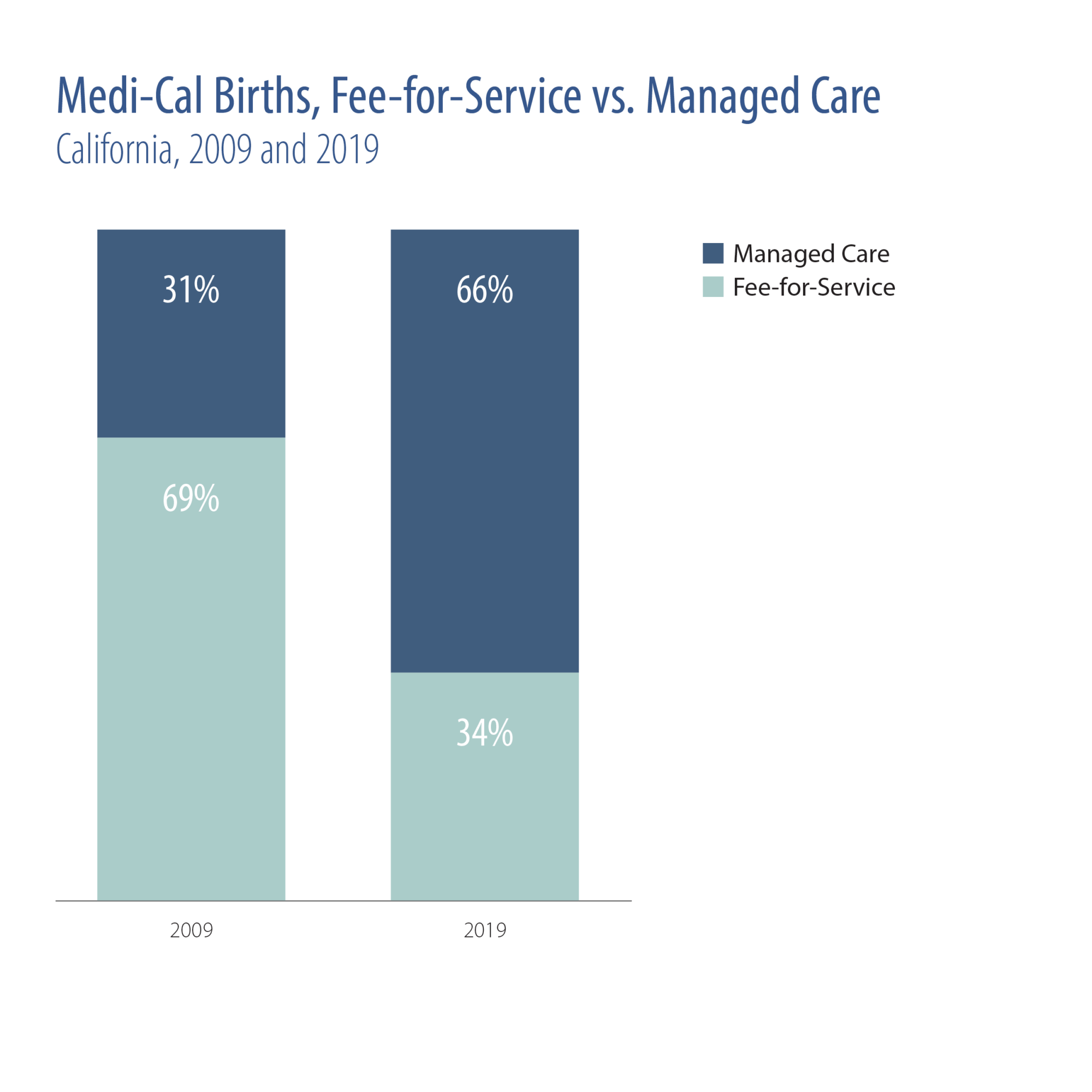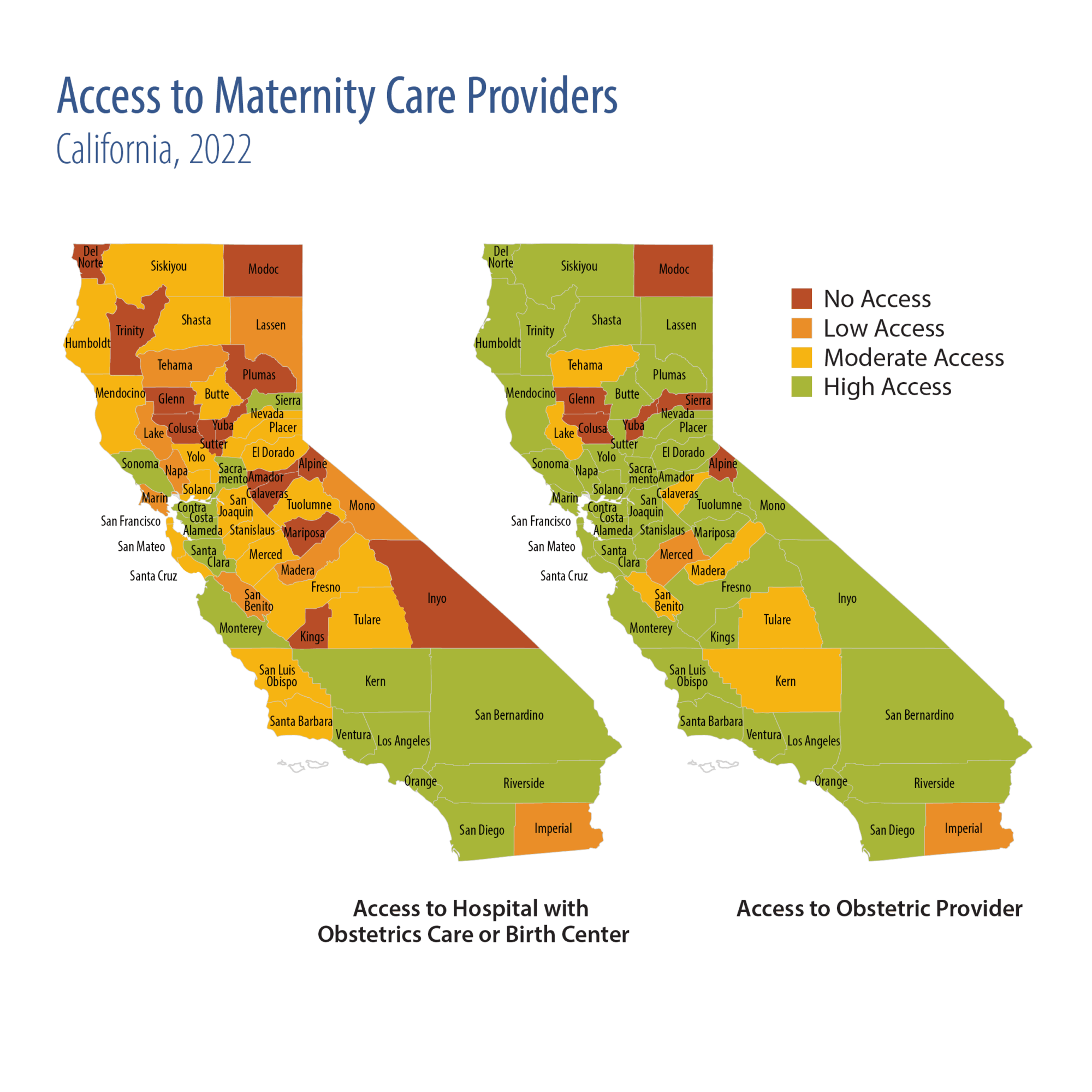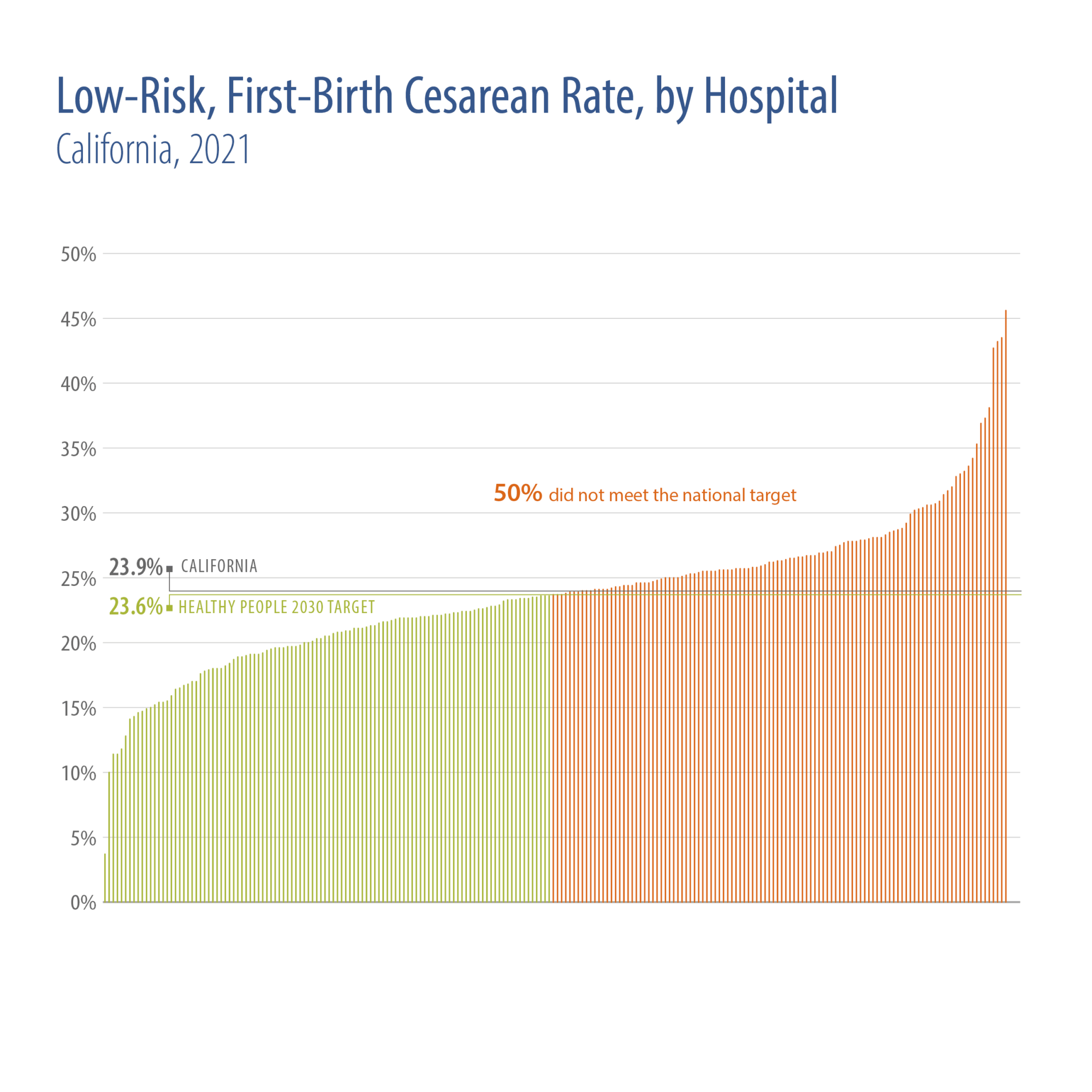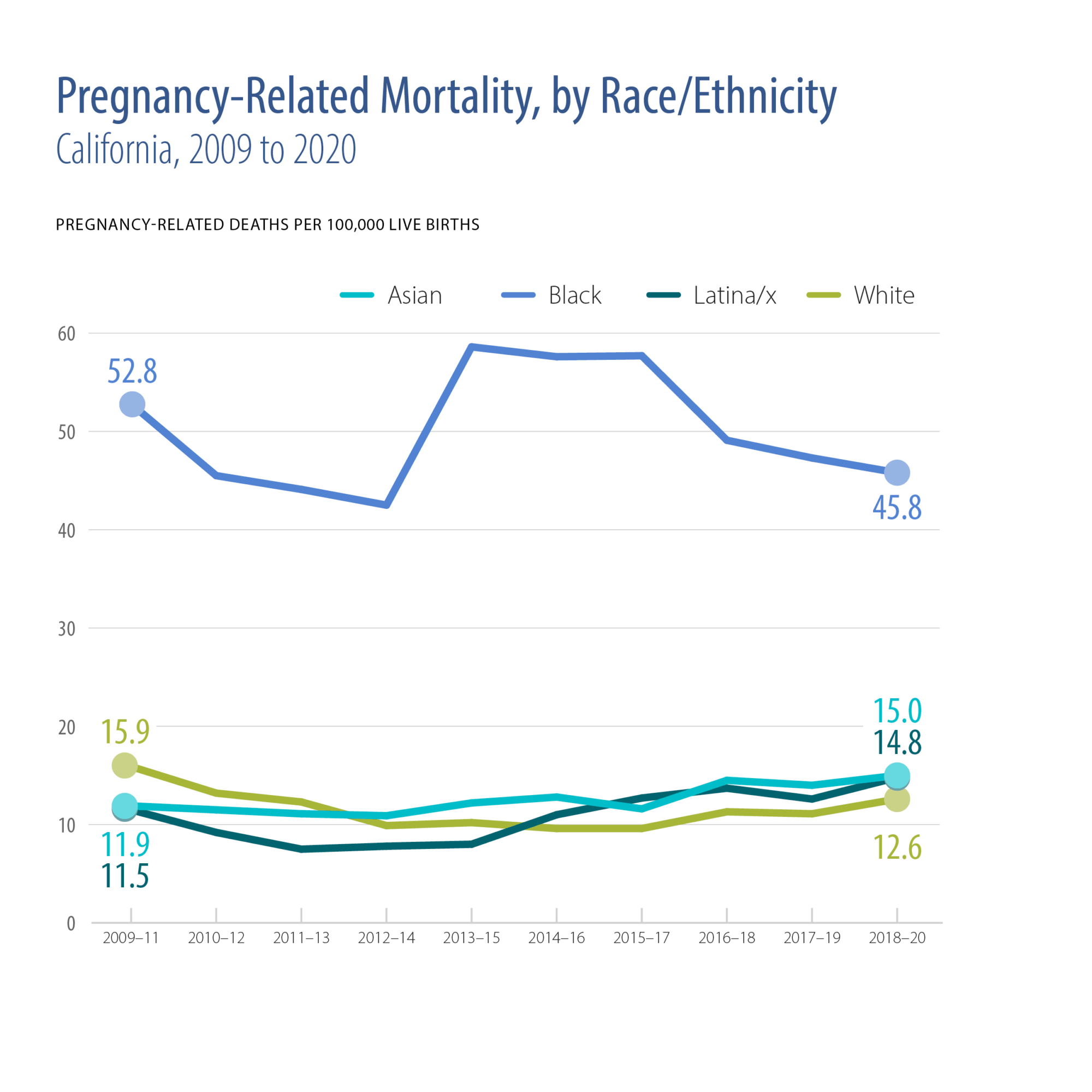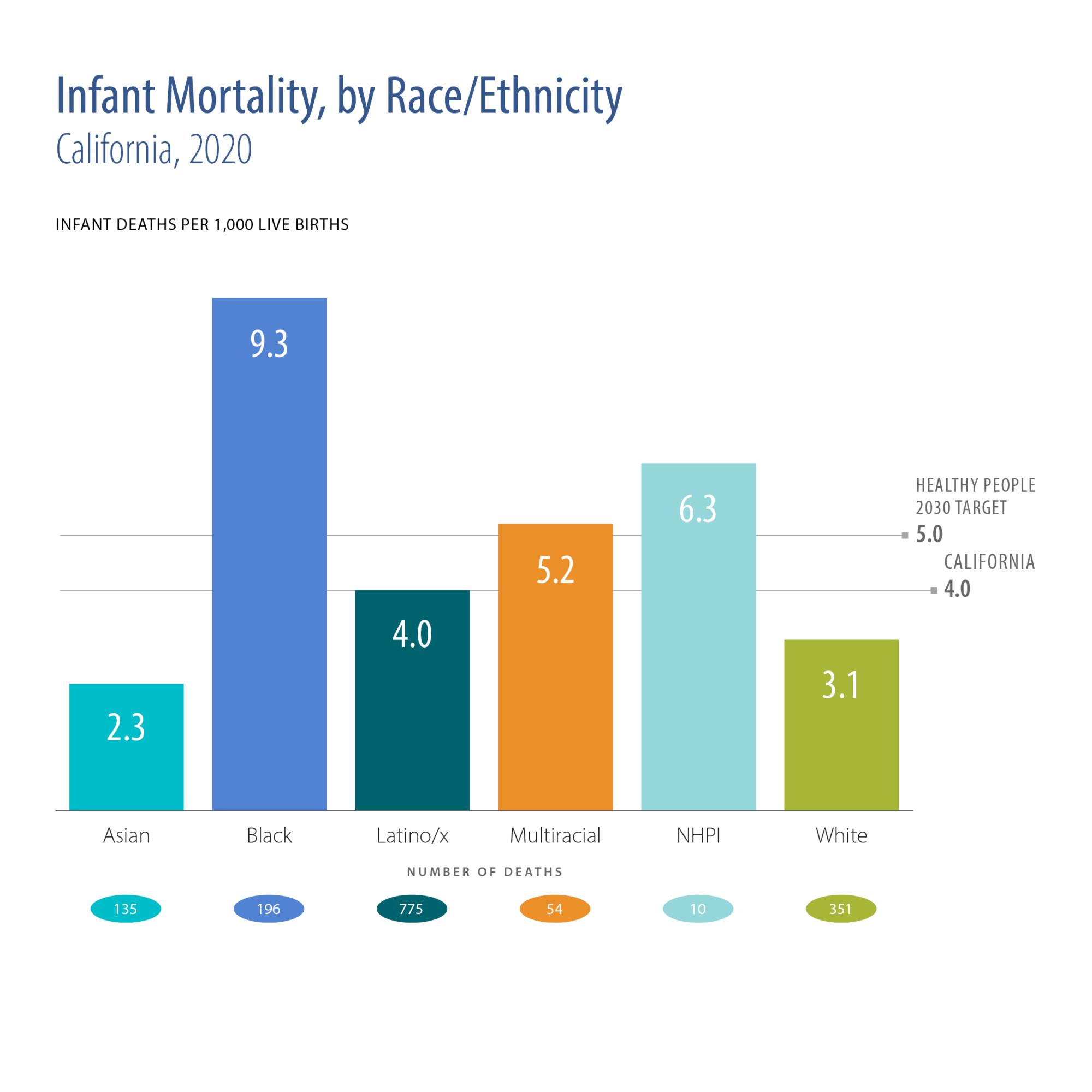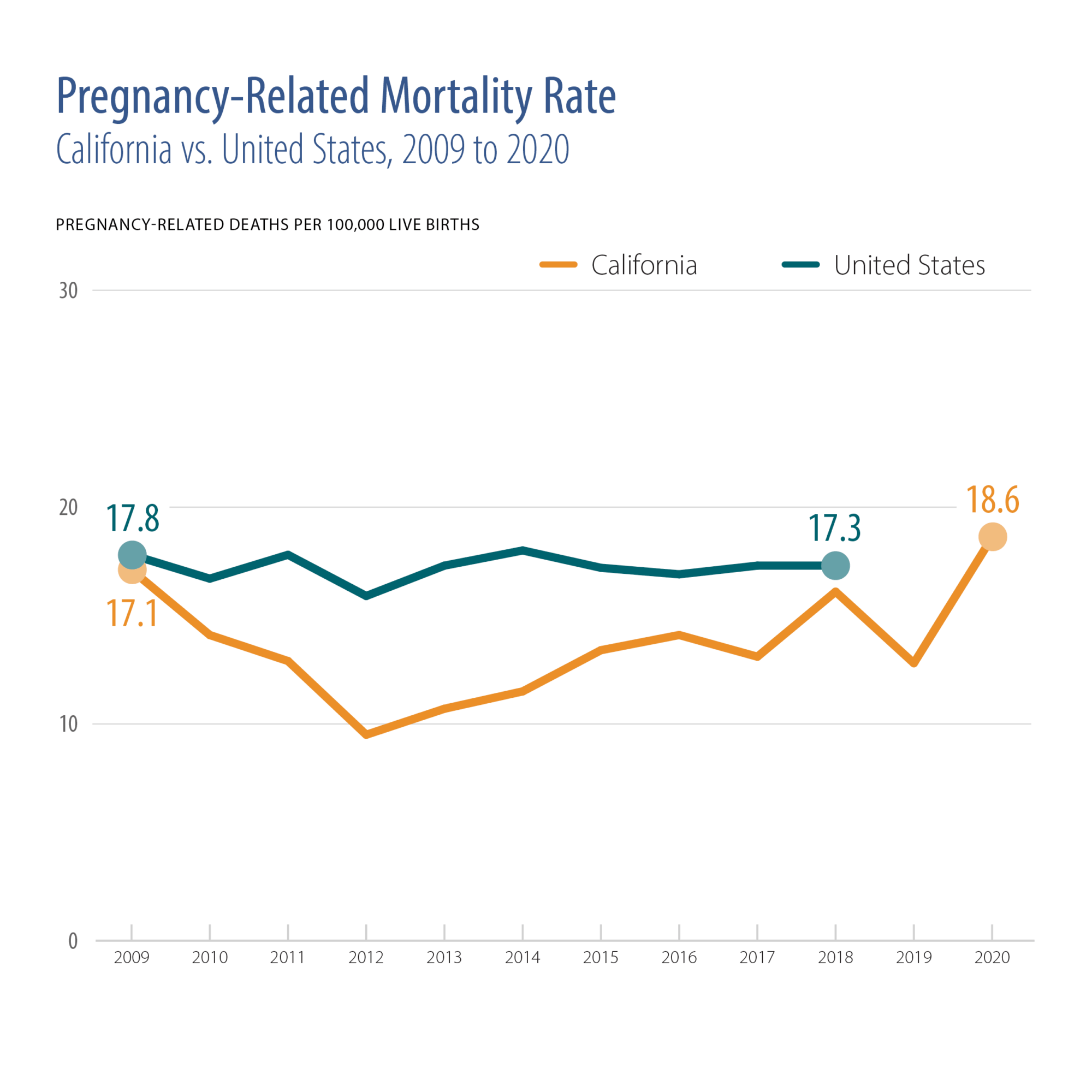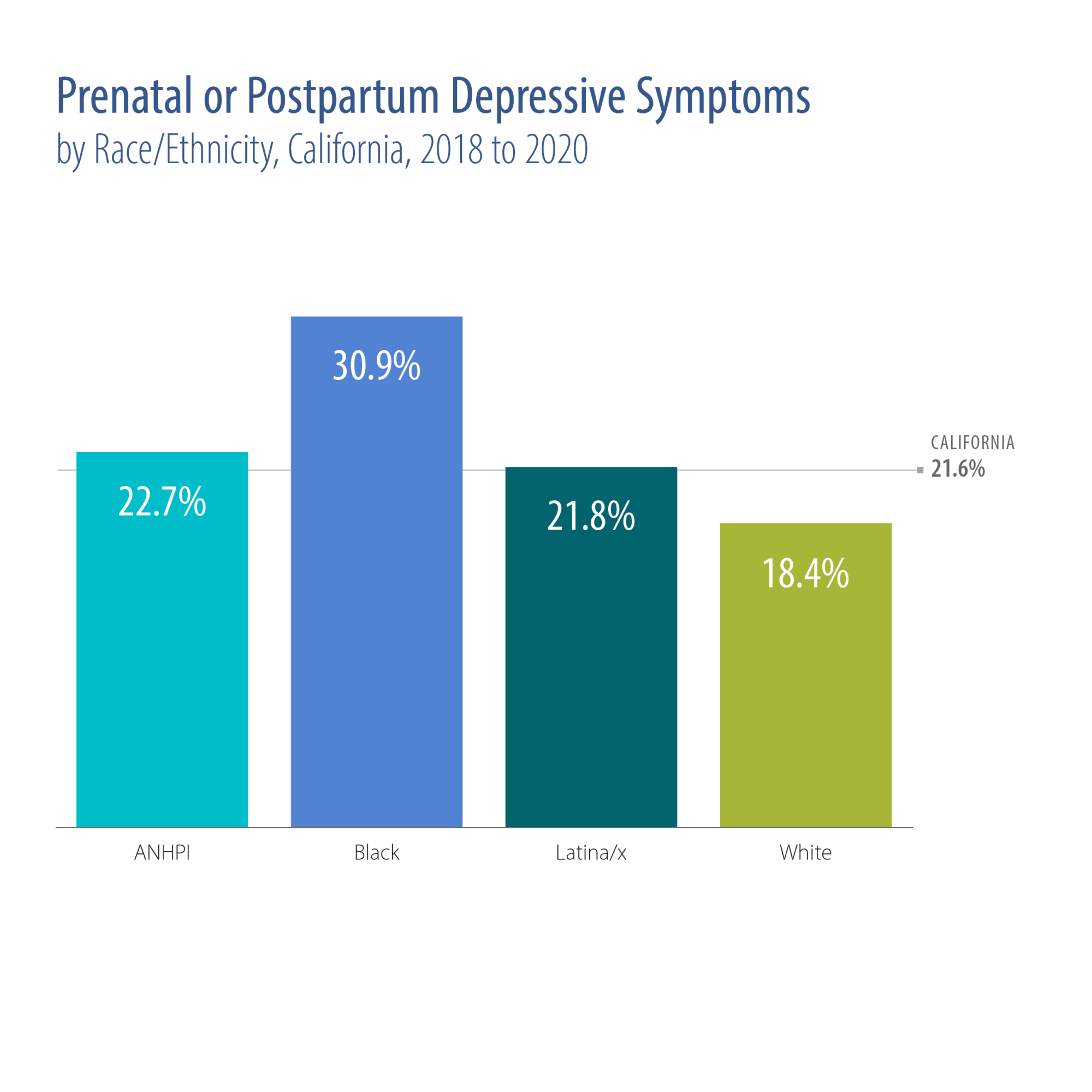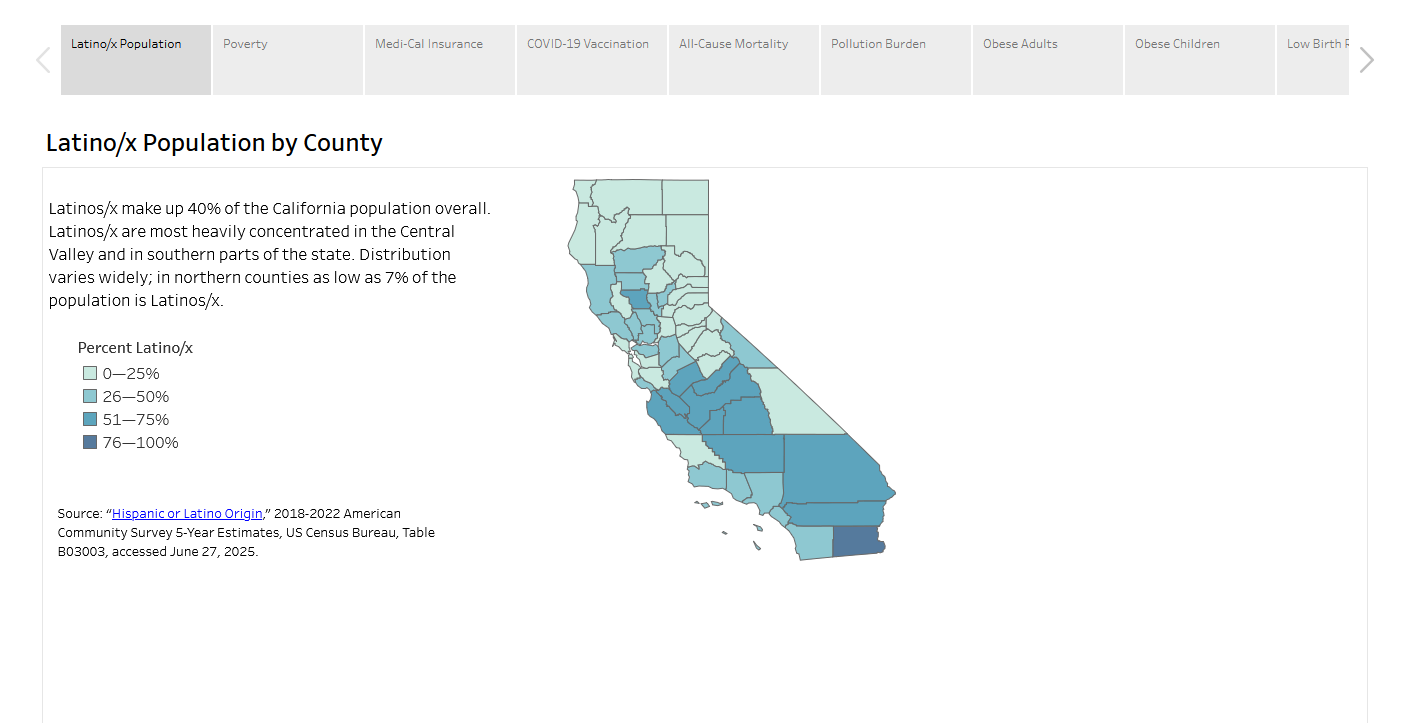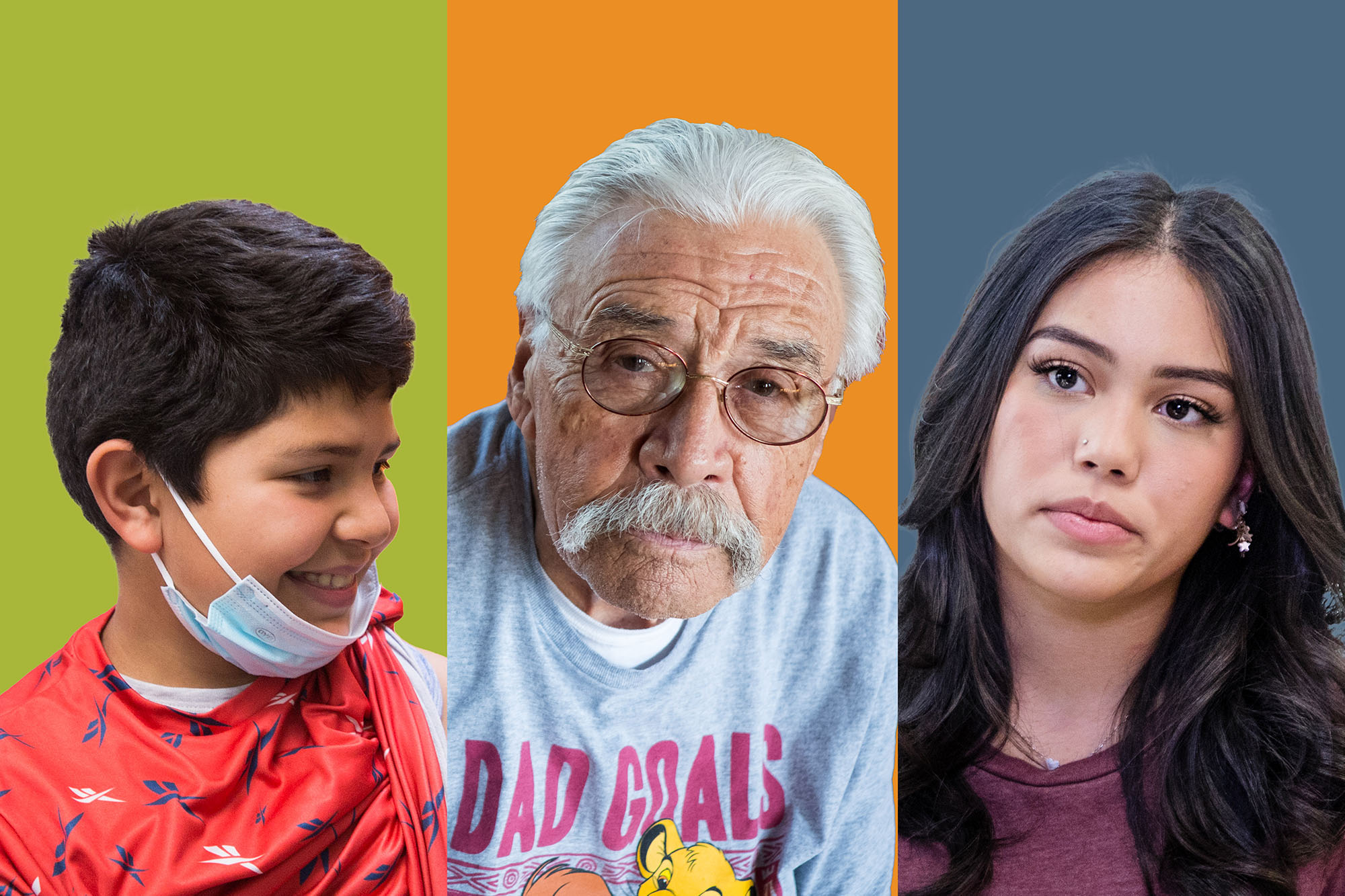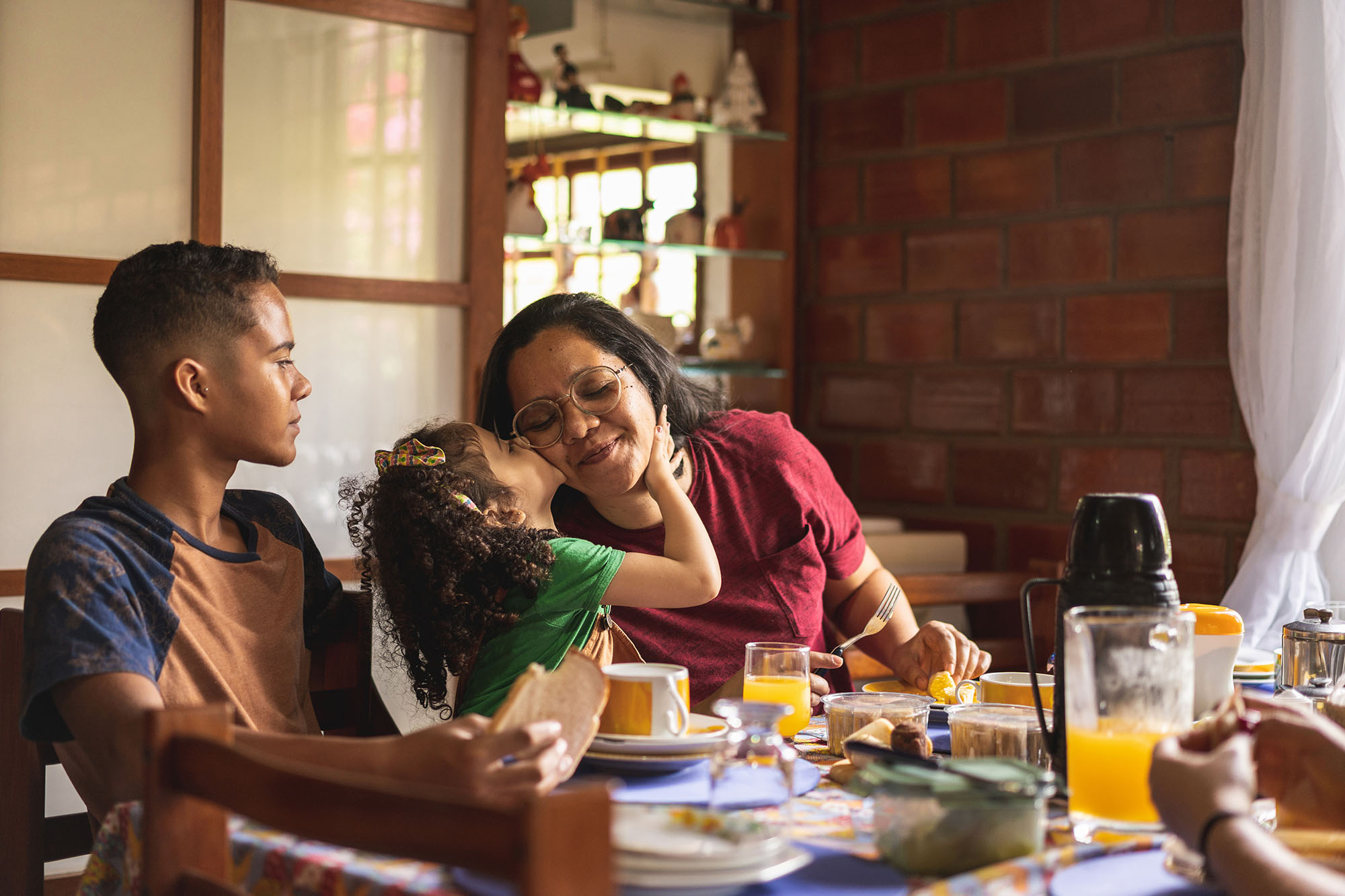View the Report
Jump to All Downloads & LinksGet These Charts
Our charts are available to use in your presentations and publications. Download a zipped file of all of the charts from this report, and review our Terms of Use.
There were 420,000 births in California in 2021, accounting for about one in 10 of all births nationwide. The number of births in the state declined 26% between 2007 and 2021.
Maternity Care in California: Delivering the Data provides an overview of the delivery of maternity care in California, using the most recent data. When available, comparisons of California data to national averages, as well as metrics by race/ethnicity and trend data, are provided.
Key Findings
This slideshow displays highlights from the full report, which is available for download below.
- While most of California’s births were delivered in a hospital by a doctor, the portion delivered by midwives increased between 2011 and 2021.
- In 2021, more than half of the state’s births (54%) were covered by private insurance, and 40% were covered by Medi-Cal.
- In 2019, two-thirds of Medi-Cal births were covered by a managed care plan, up from less than one-third in 2009.
- In 2022, 46,000 California women age 18 to 44 lived in counties with no hospitals with obstetrics care or birth centers, and an additional 76,000 lived in counties with only one hospital with obstetrics care or a birth center.
- In 2021, about one in four hospital births in California were low-risk, first-birth cesareans (c-sections). In 2021, half of California hospitals’ c-section rates were higher than the Healthy People 2030 target of 23.6%.
- Significant racial/ethnic disparities existed across a variety of maternal quality measures in California, from prenatal visits to preterm births to maternal and infant mortality rates. For many of these measures, Black women / birthing people* and infants had lower scores than their peers in other racial/ethnic groups.
- California’s pregnancy-related mortality rate has fluctuated since 2009, peaking in 2020. Throughout this period, the rate for Black mothers / birthing people was three to four times higher than the rate for other races/ethnicities.
- More than one in five California women / birthing people reported prenatal or postpartum depressive symptoms. Black California women / birthing people reported higher rates of depressive symptoms than those of other races/ethnicities.
* Birthing people is used to recognize that not all people who become pregnant and give birth identify as women or mothers.
The full report and all the charts found in the report are available for download below.
These materials are part of CHCF’s California Health Care Almanac, an online clearinghouse for key data and analyses describing the state’s health care landscape. To see past editions of this almanac, contact us.
Authors & Contributors

Jen Joynt
Jen Joynt is an independent health care consultant based in Berkeley, California. Her areas of expertise include quality of care; hospital organization, strategy, and operations; health care workforce trends; and the California health care marketplace. She has authored several reports and policy briefings.

